As I compile these interviews, I find myself wanting to say with each interviewee, “Few people are as qualified as …” and I have, in fact, had to remove a couple such sentences from earlier interviews. If this series of articles achieves its purpose, I will interview many Tolkien scholars. It will look silly and vapid to flatter each one with what seems like a faux distinction.
And yet, it is (I believe) an innate quality of literary study in general and Tolkien studies in particular that each scholar is drawn toward some unique perspective. Perhaps it is only the cream rising to the top that fully validates that point of view. When I first began publishing essays about Tolkien and Middle-earth on the Web in the 1990s, I was contacted by hundreds of students, teachers, and librarians who sought permission to use or cite my work in some way. What could they all be doing with a handful of essays?
The world of traditionally published Tolkien scholarship is diverse, rich, profound, and scandalized by occasional dross or imaginative invention. Of course, one reader’s dross is another reader’s coffee table book. I have walked into many a home to see a collection of books laid out for guests that included the works of David Day, Brian Sibley, Ted Nasmith, Christopher Tolkien, and Wayne Hammond and Christina Scull (to name just a very few). “What do you think of our Tolkien books?” people always say.
How does one be gracious without impugning the delight that friends, relatives, and strangers have found in the expression of others? I’m not the most diplomatic of conversationalists even on my best day, so I always feel a bit awkward. Nonetheless, one cannot delve into the works of Tolkien and the works about the works of Tolkien without forming opinions. There are no final arbiters of opinion, but there are a few people whose opinions are more qualified than others by virtue of their dedicated and detailed study of the literature. And, in fact, (in my opinion) few people are as qualified as Wayne Hammond and Christina Scull to lead you through the works of J.R.R. Tolkien.
I will probably say that about other people, too. In fact, I hope I do because the more people whom we feel are qualified to guide us through Tolkien’s imaginarium* the better. Frankly, not all opinions agree. We don’t all see the same things in the literature. And the literature sparks a new vision in each of us that is unique and personal. We are learning from each other’s perceptions and inspirations as much as from Tolkien’s. I think you’ll see from this interview that Wayne and Christina extend a great deal of respect to their fellow Tolkien fans and scholars for seeing what they see.
Which is not to say that Tolkien fans and scholars all agree with everything they read. But the seed has been planted and there instead of a single flower or tree a forest has taken root and sprung up. We don’t know where J.R.R. Tolkien’s stories will take us, but the journey seems far from over.
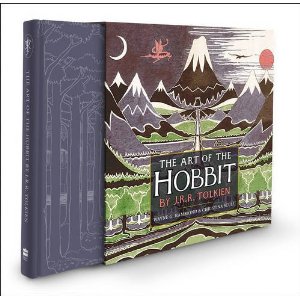
MM: You have just published a new book, The Art of the Hobbit by J.R.R. Tolkien. In an interview earlier this year you disclosed that you knew about this artwork when you prepared J.R.R. Tolkien: Artist & Illustrator (published in 1995). Why did it take 16 years to bring out a second book? Was there always a plan to publish the second volume or did that develop later?
H&S: The Art of The Hobbit by J.R.R. Tolkien was suggested by HarperCollins, as part of their celebration of the 75th anniversary of the first publication of The Hobbit in 1937. There was no thought of the new book sixteen years ago. We were commissioned only in January this year, and selected partly because we had studied the artwork already when writing Artist and Illustrator. Since we had, for that book, a strict limit on the number of pictures we could include, and only half of them could be in colour, we’re glad now to have the opportunity to include all of Tolkien’s Hobbit paintings and drawings, and to reproduce all of them in colour, which helps to bring out finer details.
The Art of the Hobbit is now available from HarperCollins (in the United Kingdom). It features more than 100 drawings and illustrations that J.R.R. Tolkien prepared for The Hobbit. –MM
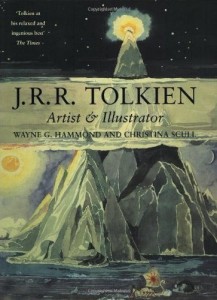
MM: Is there any more Tolkien artwork waiting to be shared with the public?
H&S: Yes, though most of it has no connection with the Middle-earth stories. There are more topographical pictures, for instance, and hundreds more of the decorative patterns and devices we discuss in chapter 6 of Artist and Illustrator. Perhaps we’ll be able to reproduce more if we have the opportunity to prepare a second edition. So many of Tolkien’s pictures have since been put up on the Web, though, and even parts of our text, all without permission, that another edition may be less attractive to potential buyers. We would like to produce one, if only because our thoughts about Tolkien’s art have naturally evolved since 1995.
MM: What about Christopher Tolkien’s work? Does he have any unpublished maps or illustrations he did for his father’s works? Might those one day come to light?
H&S: As far as we know, Christopher has made no illustrations for his father’s works.
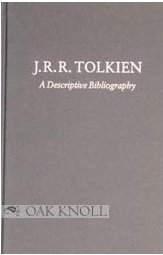
MM: As you may recall your entry for The Jerusalem Bible in J.R.R. Tolkien: A Descriptive Bibliography has been cited for years as an authoritative source for the belief that Tolkien translated the Book of Job. In 2004 (when I was pressed to “prove” I was accurately citing your research) you essentially retracted the bibliography’s statement on the basis of further research. Your statement has been shared on a few Websites, such as the Tolkien Wiki. Do people still ask you about this? Has this proven to be an unwanted controversy?
H&S: When Wayne wrote the Descriptive Bibliography (1993), he used the best information available. Better information came to our attention later, and we’ve shared it in various places. There’s no controversy in this, only some confusion. We did further research for our J.R.R. Tolkien Companion and Guide, and published an article about The Jerusalem Bible in the Reader’s Guide volume, pp. 437-39. We’re confident of the facts as now stated, but of course there could be more to say on the subject if further correspondence were to come to light.
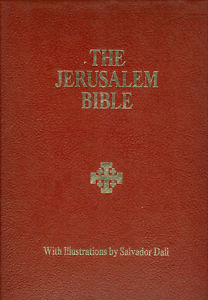
The Jerusalem Bible was based on La Sainte Bible (1945-55) and was published by Darton, Longman, & Todd in 1966. It is a Roman Catholic translation of the Bible from the original Hebrew and Greek into English for most of its books, and from French for several others (which translations were then compared to the Hebrew or Aramaic sources); The Jerusalem Bible also includes additional books and material not published in the Hebrew (Old Testament) and Protestant Bibles. J.R.R. Tolkien was invited to participate in the project but due to his time commitments was only able to provide a draft translation of “Jonah” (based on the French) and some notes and comments. You may read my initial request for clarification on the Mythopoeic Society’s mailing list and Wayne’s reply, setting the record straight. –MM
MM: You have indicated an interest in updating the Descriptive Bibliography. Is that a firm project? Are there other out-of-date entries you hope to correct? Do you think it will be possible to “wrap it all up” (definitively list all of J.R.R. Tolkien’s published works) in a second edition, or does it seem likely yet more old papers and manuscripts are still waiting to be published?
H&S: Wayne is working on a second edition, and will correct anything that needs correcting, as he did in many issues of The Tolkien Collector. He will also expand the scope of his descriptions, to satisfy collectors who now want a greater range of information, and will bring the entries up to date — that is, up to the date the second edition is submitted for printing. New editions of Tolkien’s works are sure to continue to appear, and there are still manuscripts to be published, as the Tolkien Estate may approve, particularly in the areas of his academic career and his invented languages, poetry, and letters.

MM: For Christina: You presented a paper at the Tolkien Centenary Conference in 1992, “Open Minds, Closed Minds in The Lord of the Rings” (subsequently published in 1995), that examines how Tolkien handled prejudice and mistrust in the book. Many people continue to believe that Tolkien was racist (or at least say so in various Internet postings). Do you ever think about addressing that issue again? Is there some channel you wish you had access to in order to teach more people about Tolkien’s subtle handling of prejudice?
H&S: Christina has already addressed the issue again, as principal author of the article “Prejudice and Racism” in the Reader’s Guide, pp. 785–94. We’re afraid that those who wish to believe that Tolkien was racist will do so regardless of the evidence and of any rational argument we or anyone else could make.
MM: You wrote a pretty scathing essay, “Truth or Consequences: A Cautionary Tale of Tolkien Studies”, for the LoTR Plaza fan site, that knocks holes in a lot of community claims throughout England, Ireland, Scotland, and France to have served as inspirations for Tolkien’s Middle-earth. I have come across many such claims myself in various local news stories from throughout the British Isles. Is there an authoritative reference for the geography of Tolkien’s life that scholars and fans alike can refer to? If not, do you think it would be feasible for someone to compile such a reference at this late date, with nearly every town and country inn claiming to have housed Tolkien or possessing a clear view of some mountain or marsh that inspired him?
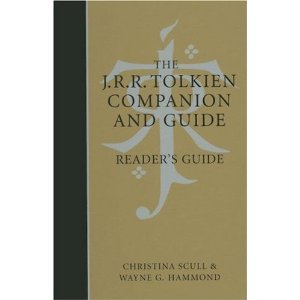
H&S: We covered in our Companion and Guide places in Britain that we knew Tolkien visited or in which he lived, in individual or collective entries in the Reader’s Guide and in passing in the Chronology. We deliberately avoided in the Companion and Guide, partly for lack of space, the sort of balloon-bursting arguments we made in our LoTR Plaza paper, but felt that the latter was a good place to make a few points — by no means all we could have made, but refutation gets tedious after a while. Probably there will always be places which claim a Tolkien connection on the basis of rumour or error or wishful thinking. We continue to collect new examples. It would be difficult indeed to create a geography of Tolkien’s life that wouldn’t upset some local promoter.
MM: Smith of Wootton Major — Do you feel it is allegorical or not? Was Tolkien struggling with his own passion for faerie in stories like “Smith”, “Farmer Giles of Ham”, “Roverandom”, and The Hobbit? Was he living what he tried to articulate in “On Fairy-Stories”?
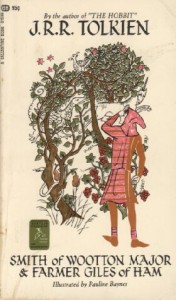
H&S: Many critics have found elements of allegory in Smith of Wootton Major (as we summarize in our Reader’s Guide entry for the story), and indeed it’s hard not to see them. On the other hand, one has to be careful not to read things into a tale which its author didn’t intend to be there; and even Tolkien’s own interpretation of Smith after the fact, in his long associated essay which has now been published, may not wholly reflect what he had in mind when he wrote the story. As for your other questions, it would take a very long space to address them, which we won’t attempt; and anyway, investigating ideas such as Tolkien “struggling with his own passion for faerie” must necessarily involve a large degree of speculation, even psychoanalysis, which we try to avoid, preferring verifiable facts (when we can get them).
Smith of Wootton Major is a medieval fairy-tale that follows the adventures of Smith from boyhood to manhood as he receives a special gift that allows him to visit the land of Fairy, where he has many adventures and gradually loses some of his connection with the “real” world. In time, he must pass on the gift to someone else. –MM
MM: If you had to sort all the books and essays (presented as scholarship) written about Tolkien’s works into buckets, do you think it would be possible to use fewer than five buckets? For example, there are certain researchers whose works have been dismissed as almost complete fabrications. There are “fan scholars”, essayists who try to imagine what Middle-earth might have looked like in greater detail, people who gloss over well-documented sources and themes, people who strive to dig deep and extract something with greater focus and detail, etc. Can it all be categorized? Should it be categorized? Is the casual reader doomed to mistake a Michael Martinez “What if?” essay for essential research into Tolkien’s use of Old English traditions? (I use my name only to avoid offending anyone else – and, besides, “Snoopy vs. The Lord of the Nazgûl” is clearly essential research, right?)
H&S: Anything can be categorized, and the more extensive the literature of a subject, the greater the need for categorization, to give it what librarians call bibliographical control, and to give guidance to newcomers to a subject in selecting the best resources for their purpose. Which is not to say that one category, or one type of writer, is necessarily better or worse than another. Both good and bad scholarship can be found in every pursuit. Nor is it quite fair to distinguish “fan scholars”, since some fans have produced very good work indeed. Even we ourselves are fans, and became Tolkien scholars because we were first enthusiasts. We’re also uncomfortable with the division between “academic scholars” and “independent scholars”, which we know didn’t originate with you, but which you mention by way of introduction to your interview with Janet Croft. Although it’s a real distinction, and obviously meaningful to some, neither label is any guarantee of the quality of a person’s work.
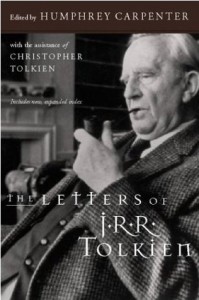
A better question might be, should any kind of Tolkien scholarship be read casually? – that is, without care and discrimination – even though much is written casually. Just as scholars need to do their part, in research and thought and clear expression, so readers need to read as widely as possible, to be better able to distinguish good scholarship from bad, and substantive work from trivialities. By this we mean, being able (for instance) to tell if the writer is proceeding from facts or from speculation (or belief, contrary to known facts); if the writer accepts a speculation as fact, and proceeds to state other “facts” on the basis of the first; if the writer chooses evidence selectively, to suit a particular result; if the writer omits reference to sources essential to the topic; if the writer uses Tolkien to further a personal agenda. Without a sufficient base of knowledge, critical reading is difficult, if not impossible. Of course, one has to build up to this, and it isn’t as simple as it was when we first became interested in Tolkien, decades ago. Many books and essays about Tolkien are added every year, and there are now many more works by Tolkien in print than just the old familiar few. We read too much comment and criticism, in print and online, by writers who seem unfamiliar with The History of Middle-earth, Tolkien’s published letters, recent annotated editions of his works, even Carpenter’s biography.
Humphrey Carpenter was an English writer and broadcaster who published biographies about J.R.R. Tolkien, the Inklings, W.H. Auden, Ezra Pound, and others. Carpenter also edited The Letters of J.R.R. Tolkien (Wayne Hammond and Christina Scull provided a more complete index for the 1999-UK/2000-US printings onward). Carpenter’s Tolkien biography, long a staple of Tolkien studies, has been joined on the Tolkien researcher’s bookshelf by more recent biographical works that explore some areas of Tolkien’s life in greater detail. –MM
MM: I suppose the point of this question is: Has the quality of Tolkien scholarship suffered from the popularity of reimaginators (such as David Day), well-intentioned researchers who fell short of the mark (such as William Ready), and others whose works are held up as examples of “good sources” even though they fail to meet the standards of true scholarship? Would there be more authoritative scholarship if there were no so much inventiveness, or are these two classes of literature symbiotic?
H&S: Where would scholarship be without invention? By which we mean, imagination but not fabrication. Everything begins with an idea. Of course, that doesn’t excuse David Day, or William Ready, or Michael White, or anyone else who states fiction as fact, or poaches the work of better scholars and passes it off as original work.
MM: There have been several attempts — at least since Douglas Anderson’s 1987 edition of The Lord of the Rings — to publish a fully correct text of the book. Is it possible to create a definitive printing that corrects all the typographical errors, restores all the omissions, and includes all of Tolkien’s “final” corrections? Is there an edition you feel meets this standard?
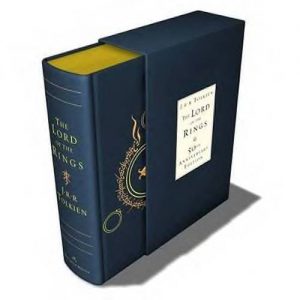
H&S: The 50th anniversary edition of The Lord of the Rings, which we edited under Christopher Tolkien’s supervision, was meant to be definitive, comes closest of any edition to date, and is being accepted as the new standard text. Unfortunately, as soon as the first printing was in hand, errors came to light, validating Rayner Unwin’s prediction that there may never be a Lord of the Rings completely free from error. Fallible humans of course are behind all parts of the process. Addenda and corrigenda to the new edition may be found on our website.
MM: Since Tolkien sold the film and merchandising rights to The Lord of the Rings there have been movies, TV specials, games, and books, books, and books galore. The Saul Zaentz-sanctioned franchises are legitimate if not representative of Tolkien’s vision. How much do these “sources” obfuscate the study of Tolkien? Have they accomplished enough to warrant their own serious study? Is there not room for a broader scholarship that seeks a structure for both the Tolkien works and the derivative works? Has that process been started by anyone? How seriously would it be taken? What challenges do you think such a comprehensive “lore of Middle-earth things” would face?
H&S: There have been serious studies of the media adaptations already, and more are in process. Which is all well and good, even if not something in which we take a personal interest (for the sake of completeness, we included a related article in the Reader’s Guide). Students of film may study Peter Jackson’s work for its strengths and weaknesses (as film), and there’s a definite sociological angle in the study of fans of the film. It’s imperative, though, that an absolute distinction be made in scholarship between what Tolkien himself produced and what others have made from it, if the adaptations are not to have a corrupting influence on how one reads, or comments on, the original creation. Unfortunately, this has already occurred: posts to Internet forums show that some people do confuse Tolkien’s Lord of the Rings with Jackson’s, and some teachers have said that they have caught out students commenting on something depicted in the films but not in the book they were supposed to be reading. Even more unfortunately, anyone who sees the films before reading The Lord of the Rings may not then be able to experience the book without Jackson-imagery and Jackson-story interfering.
Biographical Note
Wayne Hammond and Christina Scull were married in December 1994. They maintain a joint Website at hammondandscull.com.
Wayne received his Bachelor of Arts degree with Honors from Baldwin-Wallace College, Berea, Ohio, where he majored in English. In 1976 he received his Master of Arts in Library Science degree from the University of Michigan, Ann Arbor, and from that year has been Assistant Librarian in the Chapin Library (rare books and manuscripts) at Williams College in Williamstown, Massachusetts. He is the author of the standard bibliographies of the works of J.R.R. Tolkien (with the assistance of Douglas A. Anderson) and of Arthur Ransome, and has written also about authors John Bellairs, Samuel “Erewhon” Butler, and Madeleine L’Engle, and illustrators C.B. Falls and Pauline Baynes.
In 1971 Christina received her Bachelor of Arts degree with Honours from Birkbeck College, the University of London, where she studied art history and medieval history. From 1971 to 1995 she was the Librarian of Sir John Soane’s Museum, London. She emigrated to the United States in 1995. Her extensive writings about Tolkien began in 1985 in the newsletter Beyond Bree, for which she would eventually review all of the volumes of The History of Middle-earth as they appeared. In 1992 she served as Chair of the Tolkien Centenary Conference in Oxford. She created and edits the occasional magazine The Tolkien Collector, and has also written on art historical subjects, including the book The Soane Hogarths.
Together, Wayne and Christina have earned five Scholarship Awards from the Mythopoeic Society. Their joint writings include J.R.R. Tolkien: Artist and Illustrator, The Lord of the Rings: A Reader’s Companion, and The J.R.R. Tolkien Companion and Guide. They have also edited Tolkien’s Roverandom, the 50th anniversary editions of his Farmer Giles of Ham and The Lord of the Rings, and most recently The Art of The Hobbit by J.R.R. Tolkien.
* I use the word imaginarium deliberately, as opposed to legendarium, because the imaginarium is more diverse, encompassing all the expressions of Tolkien’s thought, and not just the elements of his somewhat coherent body of mythological works that are now identified with the legendarium.
# # #
Have you read our other interviews with Tolkien scholars?
